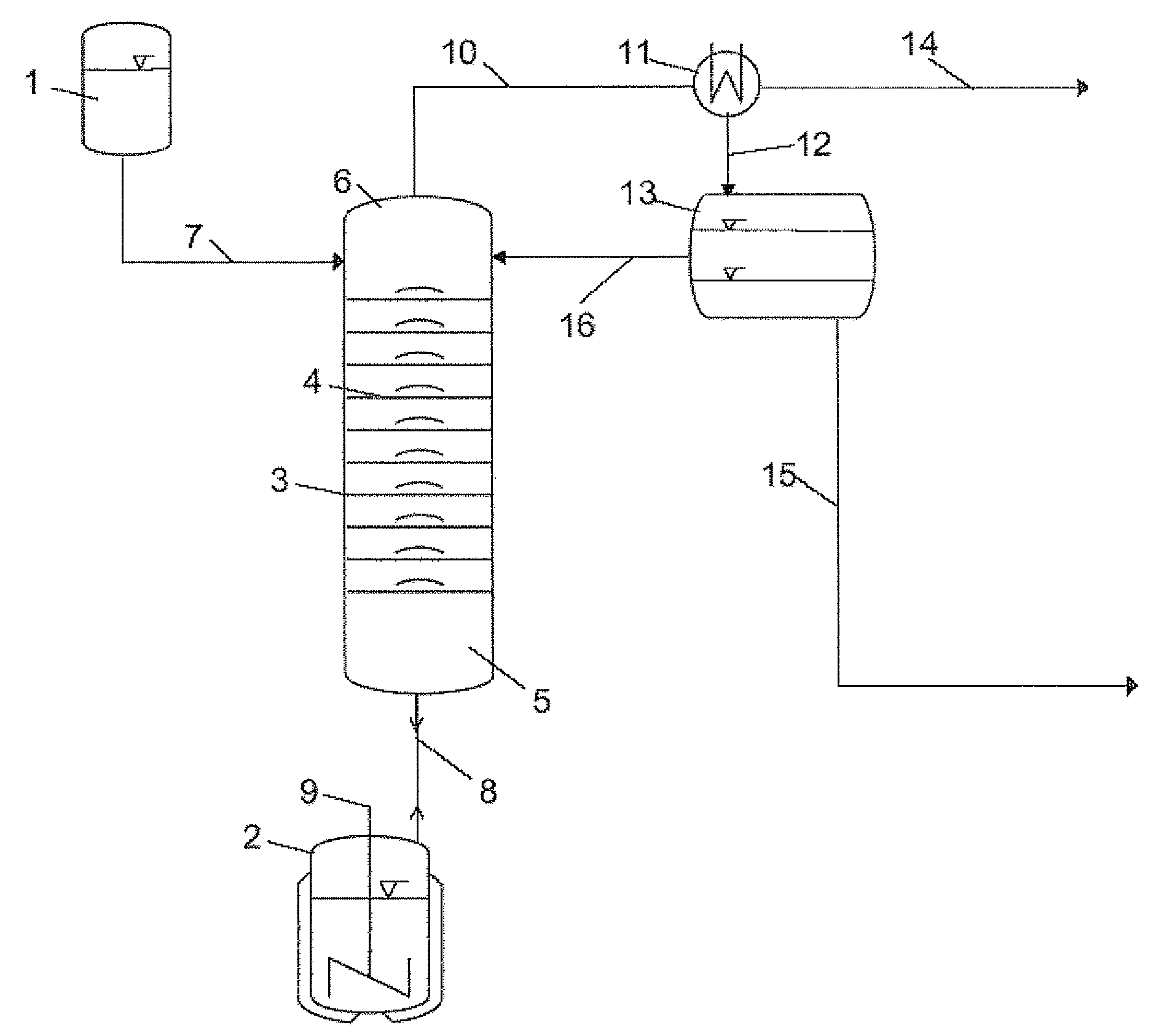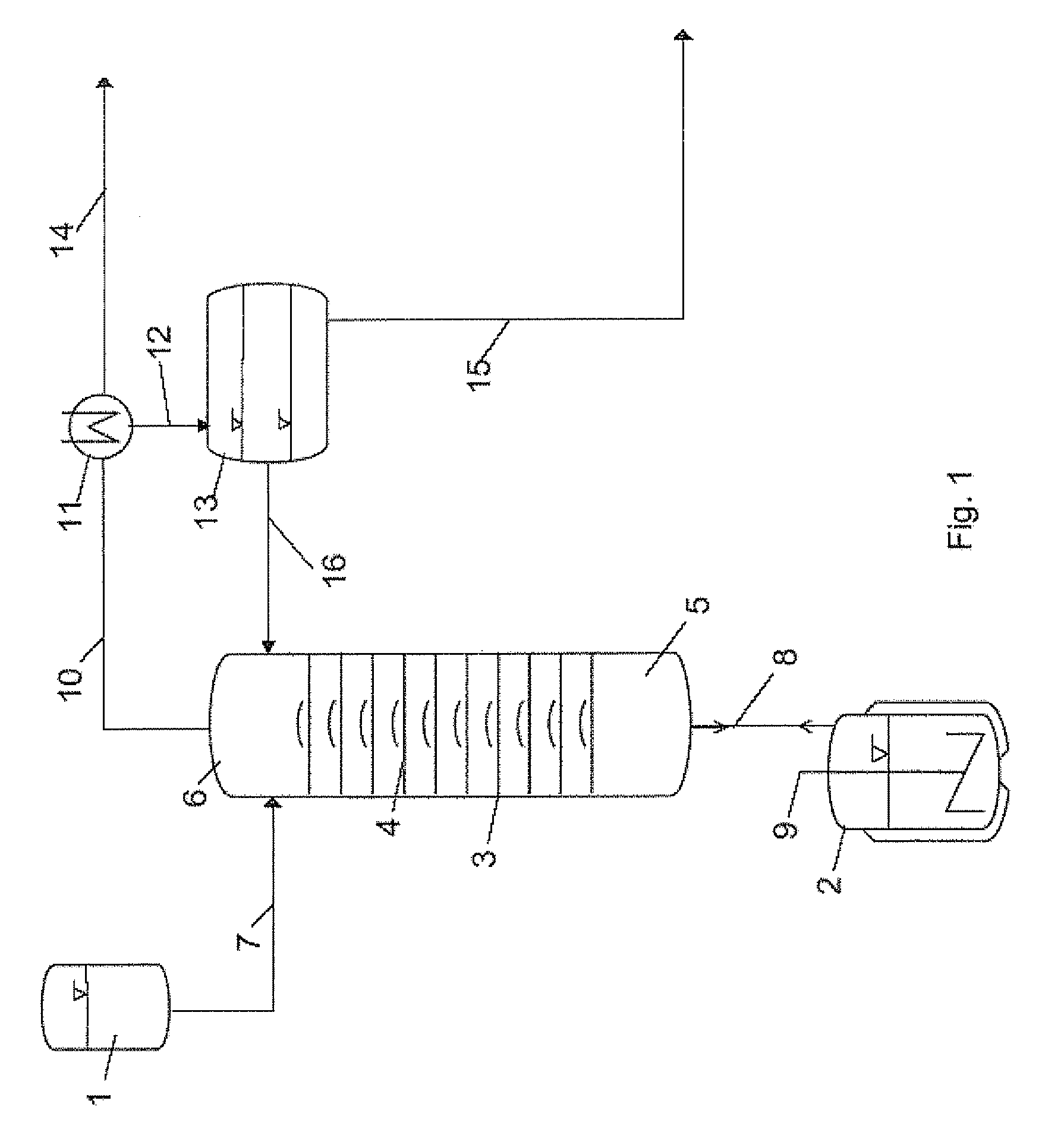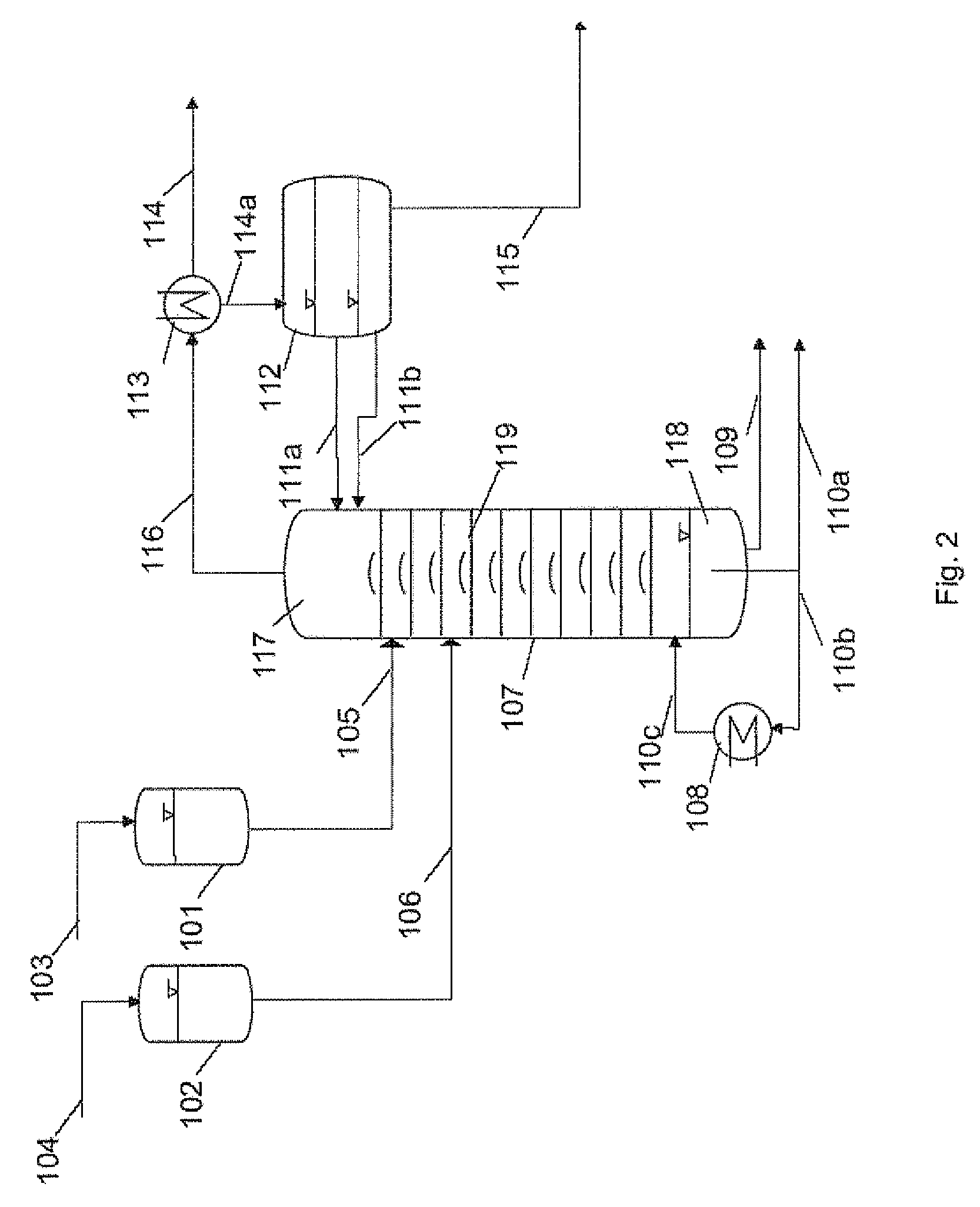Method of producing a carboxylic alkyl ester
a technology of carboxylic alkyl ester and carboxylic acid, which is applied in the field of producing carboxylic alkyl ester, can solve the problems of affecting the yield of the maximum ester in the process, the inability to obtain carboxylic acids as pure substances, and the damage of microorganisms, so as to achieve the reduction of content and undesired nitrogen compounds in the product, the effect of improving yield
- Summary
- Abstract
- Description
- Claims
- Application Information
AI Technical Summary
Benefits of technology
Problems solved by technology
Method used
Image
Examples
example 1
Preparation of Dibutyl Succinate by Means of Reactive Distillation in a Bubble-Cap Tray Column (Feeding of Vaporous Butanol into the Column Tray)
[0075]
[0076]For the esterification reaction, a bubble-cap tray column (insulated by evacuated jacket) (diameter: 0.054 m, number of trays: 10) is used, whose bottom is connected to a heated stirred vessel (size: 2 liters) which has been initially charged with n-butanol and is brought to boiling for the reaction with stirring. The top of the column is connected to a reservoir vessel via a feed and an HPLC pump. Also present at the top of the column is an outlet for the components which can be distilled off during the reactive distillation, which is connected to a condenser and a phase separation vessel, and also a reflux for liquid condensate recovered.
[0077]To perform the reactive distillation, butanol steam is introduced from the stirred vessel, which is initially charged with pure n-butanol (1 liter) at the start, into the column and the ...
example 2
Catalytic Hydrogenation of Dibutyl Succinate to THF
[0085]
[0086]For the continuous hydrogenation (in the gas phase), the pressure apparatus consists of an evaporator (T=250° C.), a reactor, a condenser, a hydrogen feed, an offgas line and a compressor. The pressure in the apparatus is kept constant at 13 bar. The dibutyl succinate is evaporated and mixed with fresh hydrogen and cycle gas (mol(DBS):mol(H2)=1:1000). The mixture of hydrogen and ester passes into a reactor (24° C.) filled with catalyst (120 ml of CuO / Al2O3). The products are condensed in the condenser.
Experimental conditions: T(evaporator)=250° C., T(reactor)=240° C., pressure 13 bar, hourly space velocity=0.1 kgester / lcat.h, molar reactant:H2 ratio=1:1000
Yield (by GC analysis; full conversion of dibutyl succinate):
Dibutyl ester used: 2825 g[0087]THF=69.0%,[0088]BDO=0.0%,[0089]GBL=0.0%.
[0090]Other by-products are small amounts of butanol and dibutyl ether; loss of THF owing to stripping (N2).
Total nitrogen content of the...
reference example 1
Experiments on the Direct Catalytic Hydrogenation of Succinic Salts to THF
[0091]For comparative purposes, various salts of succinic acid were subjected to a homogeneous or heterogeneous hydrogenation. Either no reaction (disodium salt) or the formation of various hydrogenation products, such as BDO, GBL or pyrrolidone, is observed, but not the formation of the desired THF product.
Product yieldsSubstrateCatalyst(a)Ru / Triphos Sn / Ptno reaction no reactionRu / Triphos Sn / Pt21.3%(b) 10%(b) 3.3%(b) 26.2%(b)————Ru / Triphos Sn / Pt8.6% —3.7% 2.5%——4.2% 4.8%(a)Homogeneous hydrogenation conditions: Ru(acac)3 / Triphos, 150° C., 150 bar H2, 24 h. Heterogeneous hydrogenation conditions: 3% Sn / 7% Pt on C, 120° C., 200 bar H2, 24 h.(b)The monosodium salt can be regarded as a 50:50 mixture of diacid and disodium salt. Only the diacid could in butanediol BDO and GBL. No conversion of a sodium carboxylate was observed.
PUM
| Property | Measurement | Unit |
|---|---|---|
| size | aaaaa | aaaaa |
| pressure | aaaaa | aaaaa |
| pressure | aaaaa | aaaaa |
Abstract
Description
Claims
Application Information
 Login to View More
Login to View More - R&D
- Intellectual Property
- Life Sciences
- Materials
- Tech Scout
- Unparalleled Data Quality
- Higher Quality Content
- 60% Fewer Hallucinations
Browse by: Latest US Patents, China's latest patents, Technical Efficacy Thesaurus, Application Domain, Technology Topic, Popular Technical Reports.
© 2025 PatSnap. All rights reserved.Legal|Privacy policy|Modern Slavery Act Transparency Statement|Sitemap|About US| Contact US: help@patsnap.com



